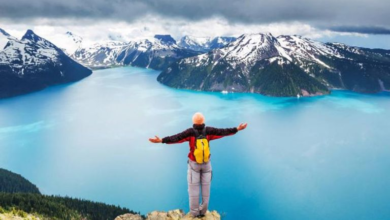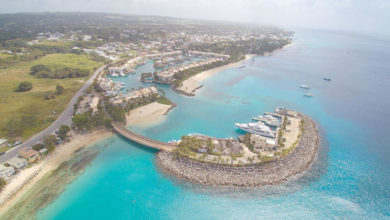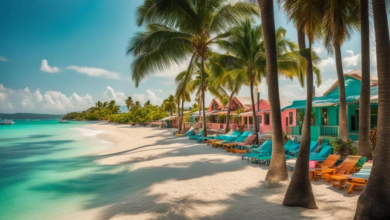Exploring Iran: A Traveler’s Guide to Conductors and Discounts

Introduction:
Iran, a country steeped in rich history, vibrant culture, and breathtaking landscapes, offers an enchanting travel experience for those seeking a unique adventure. From ancient cities and magnificent Islamic architecture to picturesque mountains and hospitable locals, Iran has much to offer. In this featured article, we will guide you through essential information about conductors and discounts to make your journey through Iran even more memorable and affordable.
- Conductors in Iran:
Conductors, known as “rahnama” in Farsi, play a vital role in guiding tourists and providing valuable insights about Iran’s historical sites and cultural landmarks. Here are some key points to keep in mind regarding conductors:
- Licensed Guides: It is advisable to hire licensed tour guides or conductors who are registered with the Iranian Cultural Heritage, Handicrafts, and Tourism Organization. Licensed guides undergo training and possess in-depth knowledge of Iran’s history, culture, and attractions.
- Language Proficiency: Ensure that your conductor is fluent in a language you can understand, as it will greatly enhance your understanding and enjoyment of the tour. English-speaking conductors are commonly available, especially in major tourist destinations.
- Customized Tours: Conductors can tailor tours to your interests, allowing you to focus on specific aspects such as historical sites, cultural experiences, or outdoor adventures. Discuss your preferences and expectations in advance to create a personalized itinerary.
- Discounts for Travelers:
To make your journey more budget-friendly, Iran offers various discounts for travelers. Here are some discounts you can take advantage of:
- Museum and Historical Site Discounts: Many museums and historical sites in Iran offer discounted entrance fees for international tourists. Keep your passport handy as it may be required to avail of these discounts. Some sites even have free admission days, so plan your visit accordingly.
- Public Transportation Discounts: Iran’s public transportation, including buses and metro systems, often offer discounted fares for students and senior citizens. As a traveler, inquire at ticket counters about any available discounts for tourists.
- Hotel Discounts: Some hotels and guesthouses may offer discounts for extended stays or during the off-peak tourist season. It is worth researching and comparing accommodation options to find the best deals that suit your budget.
- Airline Discounts: Iranian airlines occasionally offer discounted fares for international and domestic flights. Keep an eye on their websites or subscribe to their newsletters to stay informed about any promotional offers.
- Etiquette and Cultural Considerations:
While enjoying your time in Iran, it is important to be mindful of local customs and traditions. Here are a few etiquette tips:
- Dress Code: Respect the country’s dress code by dressing modestly, especially in public places and religious sites. Men should avoid wearing shorts, and women are encouraged to cover their hair with a scarf and wear loose-fitting, non-revealing clothing.
- Politeness and Courtesy: Iranians are known for their warm hospitality and politeness. Greeting locals with a smile and saying “salam” (hello) or “merhaba” (hello in Farsi) can go a long way in building positive interactions.
- Cultural Sensitivity: Be aware of local customs and traditions, especially during religious events and in conservative areas. Avoid sensitive topics in conversations, and always ask for permission before taking photographs of people, particularly women.
These additional details provide further insights into Iran’s gardens, music and dance, nomadic culture, unique water management systems, and ethnic diversity. They showcase the country’s rich heritage and the many facets of its cultural mosaic.

Here are some additional details about traveling in Iran and further tips for a memorable experience:
- Transportation in Iran:
- Domestic Flights: Iran has a well-developed domestic flight network, allowing you to travel quickly between major cities. Airlines such as Iran Air, Mahan Air, and Iran Aseman Airlines operate domestic flights, and it’s advisable to book in advance, especially during peak travel seasons.
- Trains: Iran’s railway system connects major cities and offers a comfortable and scenic way to travel. The trains are equipped with different classes, including sleeper compartments for long-distance journeys. The Iranian Railways website provides information on routes, schedules, and fares.
- Buses: Buses are a popular mode of transportation within and between cities. Iran has an extensive bus network with comfortable coaches and affordable fares. Several private bus companies, such as Seiro Safar and Hamsafar, operate routes across the country.
- Metro and Local Transportation: Major cities like Tehran, Mashhad, and Shiraz have efficient metro systems, making it convenient to explore urban areas. Taxis and ride-hailing services like Snapp and Tap30 are readily available for shorter distances within cities.
- Currency and Payment:
- Currency: The official currency of Iran is the Iranian Rial (IRR). However, the Toman, which is equivalent to 10 Rials, is commonly used in everyday transactions. It’s essential to familiarize yourself with the currency and its denominations to avoid confusion.
- Cash vs. Cards: While some upscale hotels, restaurants, and shops in larger cities accept credit cards, it’s advisable to carry cash, especially for smaller establishments and in rural areas. ATMs are widely available, and it’s recommended to withdraw cash in larger cities to ensure accessibility.
- Local Cuisine and Dining:
- Iranian Cuisine: Iranian food is diverse, flavorful, and influenced by a mix of Middle Eastern, Central Asian, and South Asian culinary traditions. Don’t miss trying dishes such as kebabs, rice-based dishes like chelow and polo, and stews like ghormeh sabzi and fesenjan. Iranian sweets like baklava and saffron-flavored desserts are also delightful.
- Tea Culture: Tea (chai) is an integral part of Iranian culture, and you’ll find tea houses and vendors offering aromatic black tea throughout the country. It’s customary to accept a cup of tea as a gesture of hospitality when visiting someone’s home or shop.
- Etiquette: When dining in Iran, it’s polite to wait for the host to invite you to begin eating. It’s also common to share dishes placed in the center of the table. Iranians are known for their generosity, so expect to be offered extra servings and enjoy the warm hospitality.
- Safety and Security:
- Travel Advisory: Before visiting Iran, it’s advisable to check the travel advisories issued by your government for the latest safety information and any specific requirements or restrictions.
- Personal Safety: Iran is generally considered a safe country to visit, and its people are known for their friendliness and hospitality towards tourists. However, like in any destination, it’s important to take basic precautions such as keeping an eye on your belongings, avoiding isolated areas at night, and respecting local customs and laws.
- Dress Code: As mentioned before, it’s important to adhere to the local dress code by dressing modestly, especially in public places and religious sites. This includes wearing loose-fitting clothing that covers the arms and legs, and women should wear a headscarf.
- Cultural Experiences:
- UNESCO World Heritage Sites: Iran is home to 24 UNESCO World Heritage Sites, including historical cities like Isfahan, Shiraz, and Yazd, as well as ancient archaeological sites such as Persepolis and Pasargadae. Exploring these sites offers a glimpse into Iran’s rich history and architectural wonders.
- Bazaars and Shopping: Iran’s bustling bazaars are vibrant hubs of commerce and culture. From the Grand Bazaar in Tehran to the Vakil Bazaar in Shiraz, these markets offer a fascinating shopping experience. You can find traditional handicrafts, carpets, spices, and much more. Bargaining is a common practice in bazaars, so be prepared to negotiate prices.
- Festivals and Celebrations: If your visit coincides with Iranian festivals, such as Nowruz (Persian New Year) or Muharram (a month of mourning for Shia Muslims), you’ll have the opportunity to witness unique cultural traditions, processions, and vibrant celebrations.
Remember to consult with local tour operators, guidebooks, and official tourism websites for the most up-to-date information on traveling in Iran. By immersing yourself in the country’s rich culture, exploring its historical sites, and engaging with its welcoming people, you’ll create lasting memories of your journey through Iran.

Here are some additional details to further expand your knowledge:
- Festivals and Celebrations:
- Nowruz: Nowruz, also known as the Persian New Year, is one of the most important and widely celebrated festivals in Iran. It marks the beginning of spring and the renewal of nature. Families gather, exchange gifts, and enjoy festive meals together. It typically falls on March 21st but may vary slightly based on the solar calendar.
- Yalda Night: Yalda Night, also known as Shab-e Yalda, is an ancient Persian celebration held on the longest night of the year, which usually falls on December 21st. Families and friends gather to commemorate the arrival of winter by staying up late, reciting poetry, eating traditional foods like pomegranates and watermelon, and engaging in joyful conversations.
- Ashura: Ashura is a religious observance primarily observed by Shia Muslims in commemoration of the martyrdom of Imam Hussein, the grandson of Prophet Muhammad. The event includes processions, mourning rituals, and reenactments of the Battle of Karbala. Cities like Yazd and Mashhad have notable Ashura processions.
- Arts and Crafts:
- Persian Carpets: Persian carpets, renowned worldwide for their intricate designs and superb craftsmanship, are an integral part of Iranian culture. Regions like Kashan, Tabriz, and Isfahan are known for producing high-quality carpets. Visitors can explore carpet workshops, learn about the traditional weaving process, and even purchase authentic Persian carpets as souvenirs.
- Miniature Painting: Persian miniature painting is a traditional art form that has been practiced for centuries. These intricate and detailed paintings often depict scenes from Persian literature, history, and mythology. You can find miniature painting workshops in cities like Isfahan and Tehran, where you can observe artists at work and even try your hand at this delicate art form.
- Calligraphy: Calligraphy holds a special place in Iranian art and is prominently displayed in mosques, religious texts, and historical monuments. The elegant Persian script known as “Nasta’liq” is widely used. Visitors can explore calligraphy exhibitions, visit calligraphers’ studios, or even take calligraphy classes to learn this beautiful art form.
- Health and Safety:
- Health Precautions: It’s advisable to consult a healthcare professional or travel clinic before your trip to Iran to ensure you are up to date on routine vaccinations and any recommended vaccinations for the region. It’s also important to have travel health insurance to cover any medical emergencies.
- Water and Food Safety: While tap water is generally safe for washing and bathing, it’s recommended to drink bottled or boiled water. Be cautious with street food and ensure it’s prepared and handled hygienically. Opt for cooked and freshly prepared meals to minimize the risk of foodborne illnesses.
- Travel Insurance: It’s highly recommended to have comprehensive travel insurance that covers medical expenses, trip cancellation or interruption, lost or stolen belongings, and emergency evacuations. Familiarize yourself with the policy coverage and carry necessary documents with you during your trip.
- Ecotourism and Outdoor Adventures:
- National Parks: Iran boasts several national parks and protected areas that offer opportunities for ecotourism and outdoor adventures. Places like Golestan National Park, Kavir National Park, and Lar National Park provide opportunities for hiking, wildlife observation, and exploring diverse ecosystems.
- Cave Exploration: Iran is home to numerous caves, some of which are open to visitors. The Ali Sadr Cave, located near Hamedan, is the world’s largest water cave and offers boat tours through its stunning underground chambers and waterways.
- Skiing and Winter Sports: Iran has several ski resorts in the Alborz and Zagros mountain ranges, such as Dizin, Shemshak, and Tochal. These resorts attract skiing enthusiasts during the winter months, offering a range of slopes for different skill levels.
These additional details should provide you with a broader understanding of various aspects of travel in Iran, including its cultural celebrations, artistic heritage, safety considerations, and opportunities for outdoor exploration. Enjoy your journey and immerse yourself in the rich tapestry of Iranian culture and natural beauty!

Here are some more details about Iran:
- Culinary Delights:
- Persian Cuisine: Iranian cuisine is diverse, flavorful, and influenced by various regions. Some popular dishes include kebabs (grilled meat), tahchin (saffron rice cake with meat or vegetables), ghormeh sabzi (herb stew with meat), and fesenjan (pomegranate and walnut stew). Don’t miss out on trying traditional Iranian desserts like saffron ice cream, baklava, and halva.
- Tea Culture: Tea is the most popular beverage in Iran. Iranians have a strong tea culture, and it is customary to offer tea to guests as a sign of hospitality. You can enjoy a cup of fragrant Persian tea in teahouses, cafes, or even in people’s homes.
- Bazaars and Shopping:
- Grand Bazaar of Tehran: The Grand Bazaar in Tehran is one of the largest and oldest covered markets in the world. It offers a vibrant shopping experience with a wide array of goods such as carpets, spices, jewelry, textiles, and traditional handicrafts.
- Vakil Bazaar of Shiraz: The Vakil Bazaar in Shiraz is a bustling marketplace known for its traditional Persian handicrafts, carpets, spices, and clothing. It’s a great place to shop for souvenirs and immerse yourself in the local culture.
- Traditional Handicrafts:
- Persian Carpets: Iran is renowned for its exquisite handwoven carpets. Persian carpets are known for their intricate designs, vibrant colors, and high-quality craftsmanship. Each region of Iran has its own distinct carpet weaving style.
- Miniature Paintings: Persian miniature painting is a traditional art form that involves intricate details and vibrant colors. These paintings often depict scenes from Persian literature, historical events, and mythology.
- Pottery and Ceramics: Iranian pottery and ceramics have a long history and are known for their beautiful designs and craftsmanship. Cities like Meybod and Hamedan are famous for their pottery traditions.
- Metalwork and Enamel: Iran has a rich tradition of metalwork, including copper and brass items adorned with intricate designs. Isfahan is particularly known for its stunning metalwork and enamel artistry.
- Iranian Cinema:
- Iranian cinema has gained international recognition for its artistic and thought-provoking films. Iranian directors such as Abbas Kiarostami, Asghar Farhadi, and Majid Majidi have received critical acclaim and won awards at prestigious film festivals.
- Iranian films often explore social and humanistic themes, providing unique insights into Iranian society and culture. “A Separation,” “The Salesman,” and “Children of Heaven” are some notable Iranian films.
- Sports and Recreation:
- Wrestling: Wrestling holds a significant place in Iranian culture, with a long history of traditional and freestyle wrestling. Iran has produced many Olympic and world champion wrestlers.
- Varzesh-e Pahlavani: Varzesh-e Pahlavani, also known as Zurkhaneh, is a traditional Iranian martial art and physical training system. It combines elements of strength training, gymnastics, and spiritual rituals.
- Soccer: Soccer (football) is the most popular sport in Iran. The Iranian national team has a strong following, and the country has produced talented players who have competed in international leagues.
These additional details provide further insights into Iran’s culinary delights, shopping experiences, traditional arts and crafts, cinema, and popular sports. Exploring these aspects will allow you to delve deeper into the rich cultural fabric of Iran.

Here are some more details about Iran:
- Historical and Architectural Marvels:
- Persepolis: Persepolis, located near Shiraz, is an ancient ceremonial capital of the Achaemenid Empire. It dates back to 518 BC and showcases impressive ruins, including monumental staircases, intricately carved reliefs, and the grand Hall of Apadana.
- Naqsh-e Jahan Square: Naqsh-e Jahan Square, also known as Imam Square, is a UNESCO World Heritage site located in Isfahan. It is one of the largest squares in the world and is surrounded by majestic structures like the Imam Mosque, Sheikh Lotfollah Mosque, Ali Qapu Palace, and the Grand Bazaar.
- Golestan Palace: Located in Tehran, Golestan Palace is a stunning example of Persian architecture and design. It was the residence of the Qajar dynasty and consists of beautifully decorated palaces, halls, gardens, and museums.
- Bam Citadel: The Bam Citadel, located in the city of Bam, is an ancient mud-brick fortress. It dates back to the 6th century BC and is an impressive UNESCO World Heritage site, although it suffered significant damage in an earthquake in 2003.
- Natural Wonders:
- Mount Damavand: Mount Damavand is the highest peak in Iran and the highest volcano in Asia. It offers breathtaking views and attracts mountaineers and hikers from around the world.
- Caspian Sea: Iran has a coastline along the Caspian Sea, providing opportunities for beachside relaxation, water sports, and exploring scenic coastal landscapes.
- Chahkooh Canyon: Chahkooh Canyon, located near Qeshm Island in the Persian Gulf, is a geological marvel. It features unique rock formations, towering cliffs, and natural sculptures carved by wind and water erosion.
- Badab-e Surt: Badab-e Surt is a natural site in Mazandaran Province known for its vibrant terraced mineral springs. The terraces display striking colors and patterns, creating a visually stunning landscape.
- Literature and Poetry:
- Persian Literature: Persian literature has a rich heritage spanning centuries. Influential poets like Rumi, Hafez, Saadi, and Ferdowsi have made significant contributions to Persian poetry and literature.
- Shahnameh: The Shahnameh, also known as the Book of Kings, is an epic poem written by Ferdowsi in the 10th century. It narrates the mythical and historical past of Iran and has had a profound influence on Persian culture.
- Poetry Recitation: Poetry holds a special place in Iranian culture, and poetry recitation gatherings (mehfil-e shayri) are popular. People gather to share and recite poetry while enjoying music, tea, and snacks.
- Religious Sites:
- Imam Reza Shrine: The Imam Reza Shrine in Mashhad is one of the most important religious sites in Iran. It is the burial place of Imam Reza, the eighth Imam of Shia Muslims, and draws millions of pilgrims each year.
- Jameh Mosque of Isfahan: The Jameh Mosque of Isfahan is a magnificent example of Islamic architecture. It is one of the oldest mosques in Iran, with elements dating back to the 8th century.
These additional details highlight some of the remarkable historical sites, natural wonders, literary contributions, and religious landmarks in Iran. Exploring these aspects will help you appreciate the depth and diversity of Iran’s cultural and natural heritage.

Here are some more details about Iran:
- Gardens and Parks:
- Eram Garden: Eram Garden, located in Shiraz, is a lush Persian garden known for its beautiful cypress trees, colorful flowers, and ornate pavilions. It offers a serene and picturesque setting for leisurely walks and relaxation.
- Fin Garden: Fin Garden, situated in Kashan, is a historic Persian garden that dates back to the 16th century. It features meticulously designed water features, traditional architecture, and tranquil surroundings.
- Mellat Park: Mellat Park, located in Tehran, is one of the largest urban parks in Iran. It offers recreational facilities, green spaces, walking paths, and a boating lake, providing a refreshing escape from the hustle and bustle of the city.
- Music and Dance:
- Persian Classical Music: Persian classical music, also known as “Radif,” is a rich and intricate musical tradition that dates back centuries. It combines melodic and rhythmic elements, and instruments like the santur (hammered dulcimer), setar (long-necked lute), and tar (plucked string instrument) are commonly used.
- Persian Dance: Iranian dance forms vary across different regions, with each having its own unique style and costume. Traditional dances like the “Azerbaijani dance,” “Bandari,” and “Kurdish dance” are performed during cultural events and celebrations.
- Nomadic Culture:
- Nomadic Tribes: Iran is home to various nomadic tribes, such as the Bakhtiari, Qashqai, and Shahsevan. These tribes have preserved their traditional lifestyles, including their distinctive clothing, crafts, and migration patterns. Visitors can experience the nomadic way of life by staying in traditional nomadic tents (black tents) and participating in their cultural activities.
- Persian Gardens and Qanats:
- Qanats: Qanats are a traditional underground water management system that has been used in Iran for centuries. These underground channels bring water from distant sources to support agriculture and provide water for drinking and domestic use. Some qanats are open to visitors, offering insights into this ancient engineering marvel.
- Chahar Bagh: The concept of “Chahar Bagh” refers to the Persian garden’s four-fold design, symbolizing the four rivers of paradise. It features a central water channel, pathways, and symmetrical planting of trees and flowers. Chahar Bagh gardens can be found in various cities across Iran, such as Isfahan and Shiraz.
- Ethnic Diversity:
- Iran is a diverse country with various ethnic groups, including Persians, Azeris, Kurds, Arabs, Balochis, and Lurs. Each group has its own distinct language, culture, and traditions, adding to the vibrant tapestry of Iranian society.
Conclusion:
As you embark on a journey through Iran, the assistance of knowledgeable conductors and taking advantage of available discounts can greatly enhance your travel experience. Immerse yourself in Iran’s rich history, explore awe-inspiring landmarks, and engage with the warm-hearted locals. By respecting local customs and embracing the cultural nuances, you’ll create lasting memories of an enchanting adventure in this captivating country.



